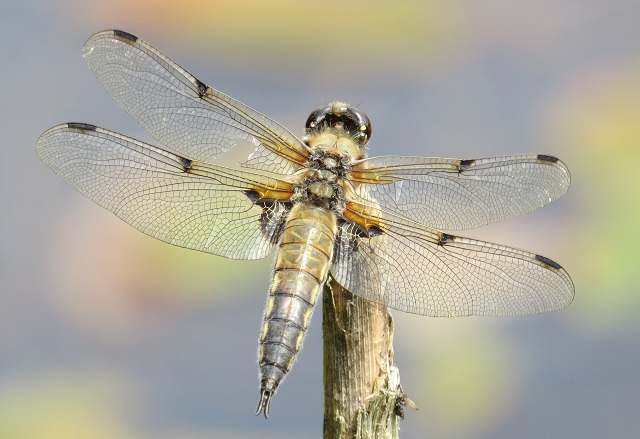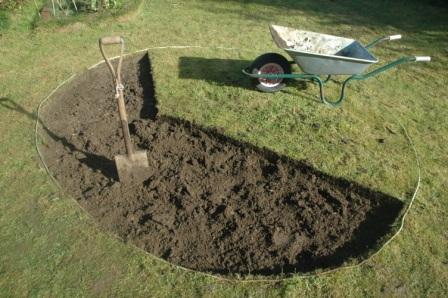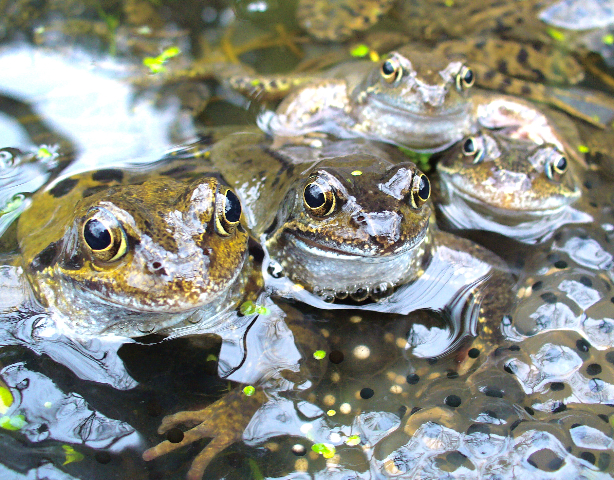
Featured Image Credit: Anne Heathcote
Earlier this month, we got back in touch with the lovely people at Freshwater Habitats Trust to get their advice on ponds before the summer months. They tell us all about the different wildlife ponds can attract, how to create your own wildlife pond, and whether or not you should worry if water levels drop in your pond in our interview below.
Our Pond Advice interview with Freshwater Habitats Trust
1. What are some of the benefits of wildlife ponds?
Wildlife ponds are fabulous places that can do much more than just offer a home for plants and animals. They bring so much pleasure to people and fascinate many a pond dipper, young and old.
But when it comes to wildlife, making a pond is the single most effective way of boosting wildlife in an area. It’s relatively simple too. In the wider countryside, making clean water ponds is often the only way of getting clean water back into the environment. Most ponds, streams, ditches, rivers and lakes are already damaged by nutrient pollution, and no longer able to support many plants and animals. It’s nigh on impossible to clean them up, but we can make new clean water habitats. Making garden ponds helps too, offering little oases to wildlife, especially in more urban areas.
2. What types of wildlife can a pond attract?
A wide range of wildlife make use of ponds, and it’s not just the usual water-dwelling creatures that benefit. Many invertebrates, birds and mammals will use ponds to drink or find food, including bees and other pollinators, and sometimes even otters or birds of prey!
A well-designed clean water pond can support dozens of plants, and many different types of fascinating dragonflies, beetles, bugs, molluscs, and of course amphibians. Different plants and animals have slightly different preferences, so if you want to attract certain species, it is worth doing a little research and designing the new pond accordingly.
3. How can I create my own wildlife pond? Do I need planning permission?
Making a pond in your garden can be a fun and straightforward task, and you don’t need planning permission from the local council. But a little planning can make a big difference for the wildlife.
In the wider countryside, digging ponds with large machinery – excavators etc – is likely to require planning permission, and we suggest you write to the local planning office, explaining what you plan to do, and ask if you need to apply for permission.
Whether big or small, taking a little time to think about location, water sources, design, and how you are going to look after it in the future, will help you make the best wildlife pond you can. We’ve put together lots of information on our website to help you.

- Credit: Jeremy Biggs
4. Is it always a bad sign when water levels drop in ponds?
Water levels go up and down naturally in ponds. In fact, surveys show that in natural ponds a water level drop of at least half a meter is typical in summer. These falling water levels create one of the most wildlife rich areas of a pond - the drawdown zone. Some plants and animals only live in this zone or need that space to reproduce, so if you keep your pond topped up, or have steep sides, you could be missing out on a whole heap of wildlife.
If you want to top up a garden pond, use rainwater rather than tap water, and you will avoid the damaging nutrients that can lead to an overgrowth of some plants and algae, and cause more sensitive plants and animals to disappear from your pond.
5. What is the biggest threat to pond wildlife?
Poor water quality is probably the biggest threat to ponds. Eight out of ten ponds in the countryside are badly damaged by pollution from fertilisers and more, leaving them with just a few plants and animals that can put up with those conditions. Many more species have been squeezed into the few clean water ponds that are left. In fact, some plants and animals are so sensitive to nutrient pollution that they are endangered. We’re left with lots of very similar, very dull ponds, a far cry from the vibrant variety of ponds we see in special areas where there is no pollution.
6. Are there any aquatic plants I should avoid, or try and remove if I see them?
Most native pond plants – species that occur naturally in your local area – would be a welcome addition to a pond, especially if the water is clean. The exception is the tough, fast growing species that love water with high nutrient levels. Reedmace and duckweed flourish in such conditions, so we wouldn’t advise planting them. There’s a good chance they’ll get there themselves anyway. In fact, we suggest most new wildlife ponds be left unplanted, to avoid unwanted plants and allow species to colonise the ponds naturally.
However, there are several non-native species that can cause problems for you and pond wildlife if they get a hold in a pond. Invasive non-native plants such as Australian Swamp Stonecrop (Crassula helmsii), Water Fern (Azolla filliculoides), Parrot’s Feather (Myriophyllum aquaticum) and several waterweeds (Elodea and Lagarosiphon species grow quickly into dense stands, at the expense of other plants. Once they are in, they are near impossible to remove, and anything taken out of the pond will need to be very carefully disposed of to prevent it spreading to other water bodies. It only takes a tiny piece of these plants to infest another pond. Buying plants from nurseries and garden centres doesn’t guarantee your new plants are clean and safe, so beware!

- Credit: Julia Page
7. How can I tell if my pond is polluted?
If you take a close look at what is living in a pond, you can start to get an idea of how polluted it is. Clean water ponds tend to have a wide range of plants and invertebrates living in them, including plants that live completely underwater. The most polluted ponds have only a few tough species, like reedmace, duckweed, algae, and a few worms or fly larvae, and will likely have cloudy water. To get a rough idea of the condition of your garden pond, you can carry out a Big Pond Dip survey. It will give you an idea of how things are going.
There are also simple test kits we provide to groups who want to test a number of ponds, streams, lakes or canals in their local area. These kits give an indication of the level of the two most common nutrient pollutants – phosphate and nitrate. The results are added to our Clean Water for Wildlife survey and can help find special clean water areas, which may need protection, or could be a great place to make new clean water ponds.
8. What can I do to help wildlife in my pond in colder weather? How detrimental is frost and ice to pond life?
Pond wildlife in the UK has evolved to survive periods of cold, frosty weather. However, there are a few things you can do to help. Provide lots of shelter in and around the pond – long grass, shrubs, lots of pond plants including last season’s stems – for animals to hide in. If the pond freezes over, animals can continue to absorb oxygen from the water, but oxygen levels will soon drop if plants are not able to photosynthesise and produce more. So, encourage plenty of submerged plants and clear any snow off the ice to let the light through. Making a hole in the ice will make little difference to oxygen levels, but could help the more mobile animals such as fish.




